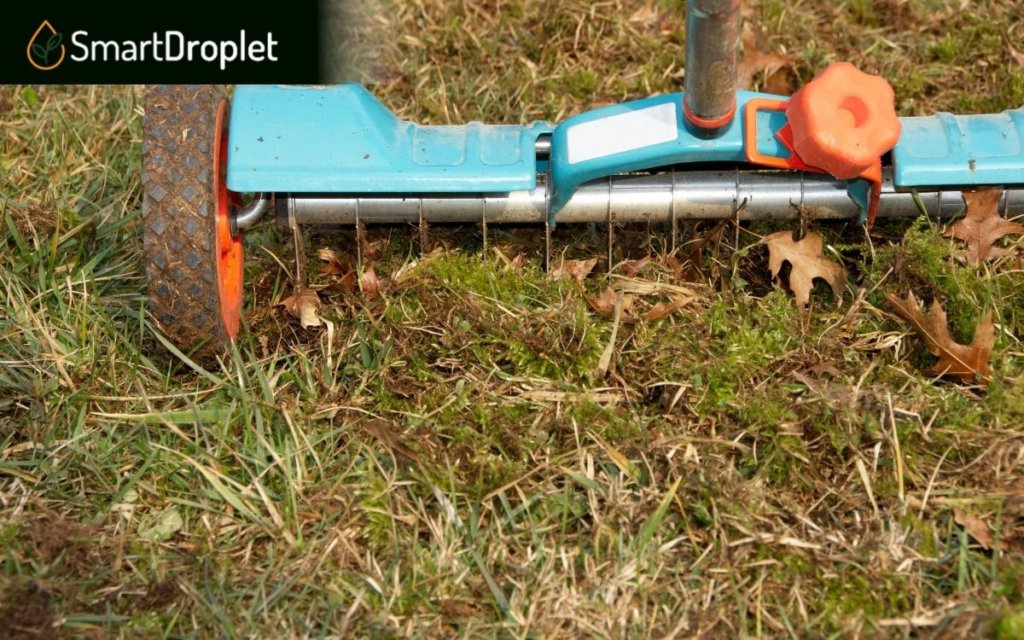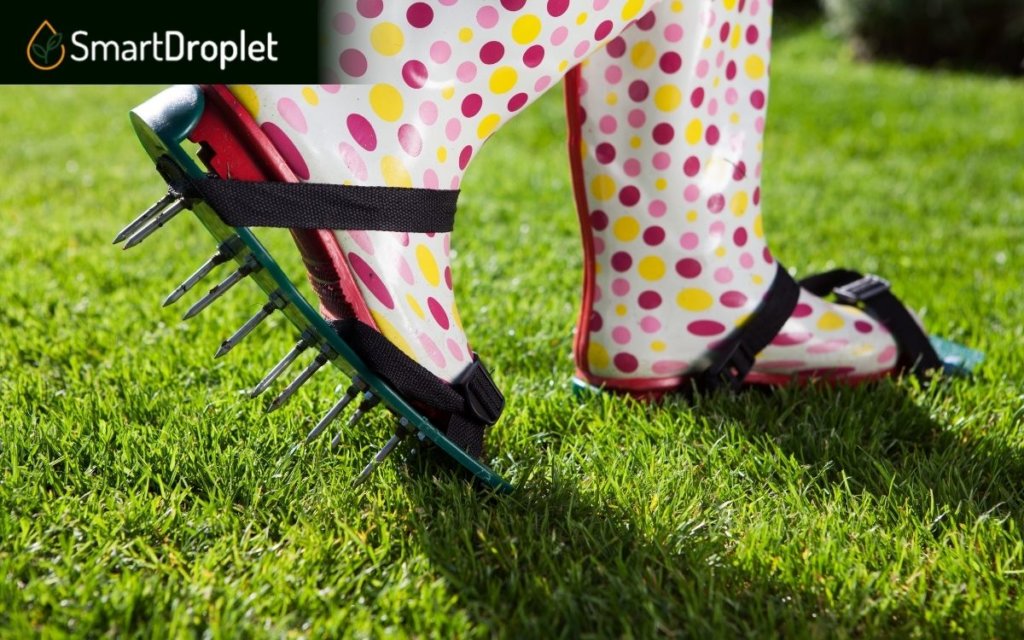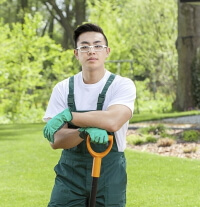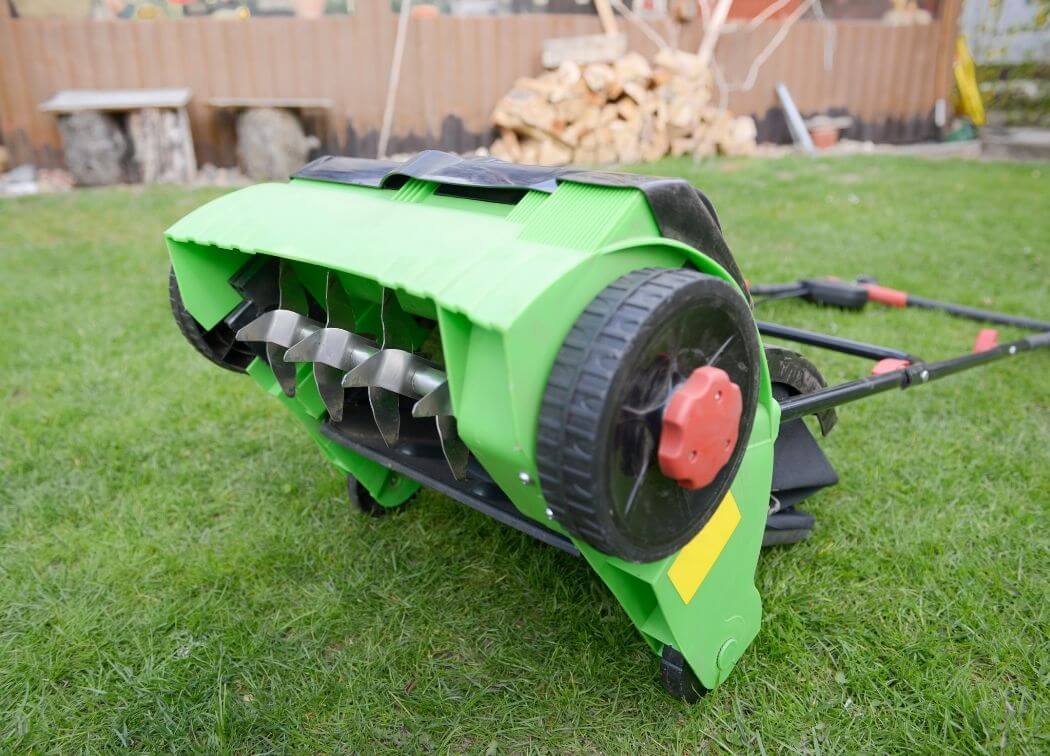Two of the most essential yet overlooked aspects of lawn care are dethatching and aerating your lawn. But which is more important? Which should be done first?
Proper lawn maintenance is the cornerstone of any beautiful lawn. A healthy lawn must be free to grow new grass seed, and its soil should help roots absorb essential nutrients and water.
This is where dethatching the top of the soil and aerating into the soil come in. They remove thatch and increase nutrient penetration, facilitating the growth of your entire lawn.
Despite their importance, lawn owners still get confused and don’t know which is more pertinent.
Dethatching works best when it comes before aeration, so you should definitely dethach first. Healthy soil will only need lawn dethatching once every season. You will only need to aerate it 1-2 times per year, depending on the soil in your area. In particular, sandy soil is content with aeration once a year. Heavy clay soil requires two aerations a year.
Should I Aerate or Dethatch First?
Dethatching and aerating are equally important for your lawn, but it would be dethatching if you had to choose which one went first.
Dethatching goes first because thatch build-up will prevent you from accessing the soil. You must clear the lawn of debris and grass layers to touch the soil if you want to aerate.
While it’s possible to use dethatching tools to aerate, it only works when thatch levels are low. Aeration needs to be done right to make space in the soil for nutrients to seep through.
In both situations, the main enemy you’re fighting is thatch, a layer above the topsoil where your turf is covered in dead organic matter, and your grass can no longer grow properly.
When this happens, you will need to encourage microbial activity to break down the layer of thatch. This is done by dethatching (make room above) and aeration (make space below).
When done correctly, your soil will be loose enough to allow water and fertilizer nutrients to seep through, and thatch will no longer be able to steal from your overseeded grass.
Another important lawn care tip comes after dethatching and overseeding. Make sure to topdress every square foot you planted with compost to increase germination.
Dethatcher vs. Aerator
When asking whether to dethatch or aerate, the question isn’t which is better, but rather, which should you use for which purpose?
We have to see some similarities and differences to know that.
These tools are designed to interact with soil and dig deep, providing enough room for seeds overseeded to seep underground and grow deep roots.
They both often employ sharp implements called tines to poke holes in their targets, whether it’s the thick thatch or the soil directly beneath it.
They are made to be rolled or carted around and often act like lawnmowers if a bit more specialized at going for the roots rather than chopping green grass blades.
I go further into what makes these two kinds of devices unique below.
Dethatcher
A dethatching tool works to remove the uppermost thatch layer and other organic matter to help soil breathe during the growing season.
It creates a healthy layer of topsoil to prepare for lawn overseeding. It does this by uprooting thatch and forcing it away from its current position, allowing seeds to find their mark in soil.
Dethatchers work best when your topsoil has sponginess to it. Removing layers of excess thatch from your lawn becomes much easier when there’s a thick amount of it.
Aerator
Lawn aerators relieve compaction in the soil by punching holes in the ground.
You may, but often don’t have to aerate your soil before overseeding. It often comes after the thatch has been dethatched, as you now have access to the soil underneath.
Aerators worked best when the core punched into has half-inch thick thatch.
Here are my recommended models of both tools. They’re proven to help lawns grow and are easy to use.
Recommended Dethatcher
- Questions, Text 563563 to chat directly with a Sun Joe expert
- POWERFUL: 12-amp motor rakes a 13" wide path to get your job done faster
- AIR BOOST TECHNOLOGY: Spring steel tines for maximum thatch pickup
Recommended Aerator
- Easy to use-- Goplus lawn aerator makes it extremely easy to aerate soil yourselves for a way greener, healthier and more beautiful lawn. Simply rolling the aerator and loosen the soil.
- Deep Watering for Lawns-- Ideal for use with looser soils higher in sand concentrations, allowing deep watering for lawns.
- Easy to Install-- Assembly is needed but easy, only need to assemble several hardware. Hardware are included.
Using these tools in conjunction will give you the best results for your lawn. Their heavy-duty construction means that they’ll serve you for many years to come.
If having 2 separate devices is too costly, some lawn machinery can swap between both features, allowing you to do both one after the other.
How Much Thatch Is Too Much?
To answer how much thatch is too much, Amounts of thatch over a half-inch thick are detrimental to your lawn.
Although dead grass shoots contain microorganisms that break down enzymes that help future grass grow, developing too many microorganisms causes shallow root syndrome.
Your green grass blades may grow, but their roots can no longer go underground and are forced to seek sustenance above, creating upward roots that follow the sun instead of water.
Over a half-inch of thatch is thus cutting depth and needs to be dethatched, or else your lawn will be prone to diseases, pests and poor growth if it grows at all.
Here Are More Problems With Thick Thatch
In addition, when a thick layer of thatch builds up, it can also prevent fertilizer from penetrating, ensuring the failure of any efforts to overseed grass and see it grow.
Pesticides will fail to seep into the ground, allowing weed grass types like crabgrass to grow, meaning your real grass has to compete for soil space and soil depth.
Lack of nutrients also attracts fungi growing on the thatch layer.
All these cause quite a mess on your ability to grow plants.
Having too much thatch is usually caused by an overdose of chemicals which prevents microorganisms from breaking the grass down to its barest nutrients, leaving you with thatch.

Lawn Aeration for Compacted Soil
Core aeration is the process of poking holes in the soil to relieve soil compaction and ensure proper germination of your grass seeds.
It is done with aeration equipment such as a lawn aerator, which you roll on top of your soil to punch holes into it. This relieves soil compaction and starts the aeration process.
When aerating your lawn, it is best to keep the soil slightly moist, especially clay soil. It is best to aerate in the early fall. Avoid aerating when the plants are dormant.
My Recommended Aerator
If you’re looking for a smaller lawn aerator, I recommend the Rolling Lawn Aerator.
- Easy to use-- Goplus lawn aerator makes it extremely easy to aerate soil yourselves for a way greener, healthier and more beautiful lawn. Simply rolling the aerator and loosen the soil.
- Deep Watering for Lawns-- Ideal for use with looser soils higher in sand concentrations, allowing deep watering for lawns.
- Easy to Install-- Assembly is needed but easy, only need to assemble several hardware. Hardware are included.
This manual aerator is lightweight, easy to operate, and gives you 18 inches worth of tines to work with. It’s durable steel with plastic tires to keep the size and heft down.
The Rolling Lawn Aerator is easy to install as well, and when used on sandier soil, it allows water to penetrate even deeper, spreading more nutrients and encouraging more plant growth.
As for larger lawns, I recommend the Step ‘N Tilt Core Lawn Aerator.
- Designed for operators between 4-feet and 6-feet 5-inches tall.
- A soil core remover is included. Designed for all kinds of soil, including heavy clay soil - make sure the soil is very moist but not wet.
- Please remember to aerate when the soil is VERY MOIST only. Some assembly is required.
This heavy-duty set-up may have lesser tines than the first one, but it packs more of a punch, digging deeper than is possible with other smaller aerators.
The Step ‘N Tilt works best in grassy, very moist areas, and it makes core aeration a delight to do, especially for those who hate hiring other people to do their lawn maintenance for them.
The aerator is designed to handle a wide array of users regardless of height and weight, and since this is a manual machine, it makes it accessible to a larger group of green thumbs.
Lawn Dethatching for Dead Grass
To dethatch your lawn, you will need to mow your lawn to half its normal height, giving you a clearer view of your grass-roots and making your dethatching process much smoother.
Thatch is a layer of grass clippings, dead, living, and an assortment of grass that tends to be flattened rather than removed. You will need to dethatch for deeper root growth.
A Thin layer may start beneficial, especially in the early summer. After a while, you’ll need a power rake, vertical cutter, mulching mower and lawn service to clear up your thatch layer.
Dethatching is important for the following reason:
- It allows fertilizer to seep in, encouraging lawn growth. Dethatching in early fall willhelp you grow cold-season grasses even better. Warm-season grasses go for late spring.
- It ensures seeds engage with the soil even when overseeding your lawn.
- It allows the lawn to breathe better, allowing healthier plants to grow bright green with more access to oxygen.
When dethatching your lawn, always remember to mark and avoid sprinkler heads, hoses and other debris to stay on the safe side and prevent ugly bare spots from forming on the soil.
My Recommended Dethatcher
The Sun Joe Electric Lawn Dethatcher is my ideal dethatching rake for small to medium-sized lawns.
- Questions, Text 563563 to chat directly with a Sun Joe expert
- POWERFUL: 12-amp motor rakes a 13" wide path to get your job done faster
- AIR BOOST TECHNOLOGY: Spring steel tines for maximum thatch pickup
This detacher is an absolute powerhouse. It’s powered by a 12 amp motor to power a 13′ grinder. You can adjust the depth of how much it cuts into the thatch.
It can even take out grassroots for more optimal growth afterward.
As for larger lawns, I recommend the Brinley Tow-Behind Dethatcher.
- Ideal for Large Yards: Wide 48" working width is perfect for larger mowers or bigger greenspaces - covering more ground for quicker results.
- Spring Steel Tines: 24 long-lasting, triple-coil strength 3/16″ diameter spring steel tines stay flexible and guarantee performance.
- Simple Assembly: Includes easy pictorial assembly manual.
This dethatcher is massive. It has a 48′ working width, allowing you to tow it behind a tractor and dethatch large lawns with no issue.
Its all-steel construction and steel tines, in particular, make it a heavy-duty piece of hardware that’ll scrape up the toughest patch of thatch and allow you to plant seeds properly and deeply.
When and How Often Do You Aerate Your Lawn?
How often and when you should be aerating your lawn depends on the kind of soil in your yard. Sandy soil only needs aeration once in late spring. Clay soil needs it twice.
If you’re working with cool-season grasses, aeration works best in the fall, as core aeration gives grass seed enough room to grow roots in the soil.
When you see your lawn start to grow warm-season grasses and weeds in early spring, such as crabgrass, it’s time to bust out the lawn aerator.
Conclusion

Both processes are vital in opening up compacted soil (lawn aeration) and clearing thatch buildup (dethatching). When done right, they can make your lawn beautiful and vibrant.
If you dethatch before aerating and avoid your sprinkler heads when you dethatch your lawn, then I promise your lawn is on the road to a greener tomorrow.
(Companies endorsed do not specifically market to children under the age of 13)
Frequently Asked Questions:
Do you still have questions about the topic at hand? Here are the questions frequently asked from various people! We hope this article section will help you ease some concerns you have.
Is It Better to Dethatch or Aerate Your Lawn?
Professional landscapers will say that both activities are equally important. This is due to their overlapping nature, allowing grass across your entire lawn to absorb nutrients better.
Most lawns benefit more frequently when you dethatch your lawn, but soil compaction is a serious issue that dethatchers are inadequate in handling.
This is why you may need to aerate your lawn as well. Both work hand in hand, and although you need to do one more frequently, doing both is the winning combination for your lawn.
Should You Dethatch or Aerate Your Soil Surface Before Overseeding?
When planning to overseed your lawn, it is best to dethatch AND aerate to remove dead grass, open up compacted soil, and ensure your new grass grows past the soil surface.
Though it is more standard to dethatch before overseeding, you will also need to aerate if you see the soil underneath is packed. This ensures deep water penetration and deep roots.
Ensuring that thatch does not steal your grass’s nutrients, and soil does not block your plants from taking root is vital in giving your new seeds a fighting chance at life.
Can a Dethatcher Aerate for Soil Compaction?
A dethatching rake is a most useful tool for removing stubborn, detrimental layers of grass thatch from your lawn without digging into the soil.
Though you could try to use it to aerate your lawn, and it does work when thatch is low, you’d have much better luck using a mechanical aerator designed for that job.
It is always better to use the right equipment and ask for expert help to ensure the best lawn maintenance.






